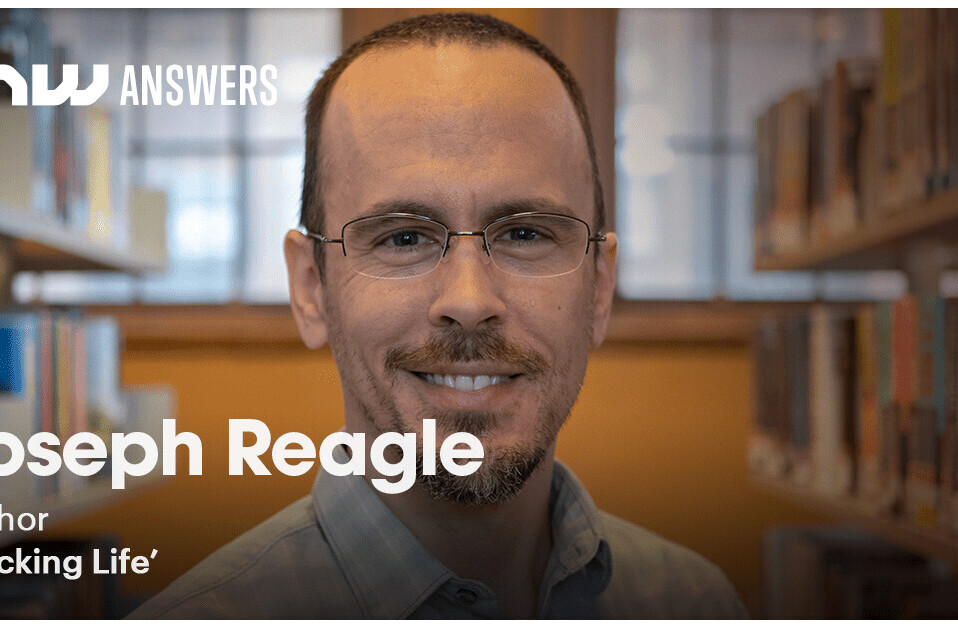
The spaces in which we work and the people we work with make up most of our lives. Why, then, is happiness viewed as a distant outcome rather than an enduring prerequisite?
Whenever I meet someone who expresses love or hate for his or her job, I immediately interrupt and ask why.
What ensues is either enthusiastic explanations or frustrated rants, revealing patterns for what produces happiness at work and what hinders it.
The elements of what people seek in the workplace are becoming so obvious—backed by science, psychology, philosophy, and stories told by managers and leaders—it makes me wonder when the majority will stop hating Mondays. It worries me knowing that they might not.

When I think about what makes me happy to work for Help Scout, it ties directly to decades-old conventional wisdom that has only recently been backed by the sciences: a desire for meaningful work, a sense of belonging or connection, ownership, creativity, and purpose.
Psychologist and author Martin Seligman posited that “authentic happiness” is a combination of engagement, meaning, and positive emotions. He studied people from all over the world and discovered that when a person exercises certain traits or virtues—like duty, kindness, and leadership—it promotes authentic happiness.
The two realms of life that are most likely to elicit engagement, meaning, and positive emotions are our social relations and the workplace. And yet, if you ask around, you’ll sadly come to the realization that most workplaces hinder engagement and positive emotions.
Here are 27 resources from great thinkers, researchers, and leaders on helping you hone in on happiness so that you can cultivate it within your team and your day-to-day activities
1. Growing The Future Perfect Team
Creating an environment that fosters autonomy and ownership, while encouraging a growth mindset, are aspects of great leadership.
2. 10 Academic Insights on Building, Motivating and Managing an Exceptional Team
“Is team building an art or a science? When it comes to assembling, motivating and keeping a great team happy so that they can flourish in your business, the truth is that it’s a bit of both.”
3. The Happiness Dividend
“A decade of research proves that happiness raises nearly every business and educational outcome: raising sales by 37 percent, productivity by 31 percent, and accuracy on tasks by 19 percent, as well as a myriad of health and quality of life improvements. Yet even those companies that do take leadership training seriously still ignore the role that happiness plays in leadership effectiveness.”
Also see Shawn Achor’s TEDTalk, The Happy Secret to Better Work.
4. Passion, Not Perks
“Nurturing the people in your organization doesn’t require expensive perks or touchy-feely gimmicks. It’s about motivating, engaging and listening – and it can work for anybody.”
5. Don’t Pamper Employees — Engage Them
Who doesn’t appreciate perks like free lunch and mid-day naps? But if this is the sole reason why you “love” your work—sorry for the bad news—it won’t last. Meaningful work that engages employees and connects them to a greater purpose will outlast games of foosball during break.
6. Money Matters (But Not As Much As You Think It Does)
No doubt money is important, but to use it as the only motivator for your employees is a borderline slap in the face. Hopefully, one day, our culture will understand that this green paper isn’t the only fuel to sustain a fire.
7. Can Money Buy Happiness?
A wonderful complement to the article above, AsapSCIENCE explores whether money can buy happiness by delving into empirical research on this fascinating subject.
8. 7 Habits of Incredibly Happy People
“While happiness is defined by the individual, I’ve always felt it foolish to declare that nothing can be learned from observing the happiness of others.”
9. How to Find Fulfilling Work
The School of Life shares six timeless pieces of wisdom on how to find work that’s fulfilling and meaningful. Not only is this a great compass to finding fulfilling work, but it’s also worth noticing if any of these factors play a part in your day-to-day activities.
10. NO DICKHEADS! A Guide to Building Happy, Healthy, and Creative Teams
“There is a perpetuated myth within the design community, that a single visionary is required to build great products. Rubbish. Great teams build great products; moreover, in my experience, the greatest teams prioritize and nurture a healthy and positive internal culture because they understand it is critical to the design process itself.”
11. Flow, The Secret to Happiness
“What makes a life worth living?” Mihaly Csikszentmihalyi asks and attempts to answer this important and compelling question in his 2004 TED talk.
12. Being Inspired
Sina Mossayeb, a designer at IDEO, felt uninspired and started hearing the voices of self-doubt. He turned to his three Jedi Masters (mentors) for help and walked away with three timeless principles for staying inspired.
13.11 Ways to Avoid Burnout
Burnout is like dehydration: once you feel it, you’ve gone too far. 99u shares their 11 best strategies for identifying, avoiding, and treating burnout.
14. The Surprising Science of Happiness
Harvard psychologist Dan Gilbert believes that we’re carrying the wrong map for the pursuit of happiness. His relatable and humorous style of speaking will make this talk worth revisiting so we don’t confuse what happiness really is. (Pair this with his other talk, The Psychology of Your Future Self)
15. The Negative Path to Happiness and Success
In this 99u talk, author and journalist Oliver Burkeman says that allowing some negativity in and loosening the grip on our goals can be helpful.
16. Confessions of a Fully Supported Employee
David Mizne, content editor at 15Five, has a confession to make: he loves his job. His reflections reveal why he’s engaged with his work and the company.
17. How to Break the Tyranny of Work/Life Balance
“The equilibrium between productivity and presence is one of the hardest things to master in life, and one of the most important. We, both as a culture and as individuals, often conflate it with the deceptively similar-sounding yet profoundly different notion of “work/life balance” — a concept rather disheartening upon closer inspection. It implies, after all, that we must counter the downside — that which we must endure in order to make a living — with the upside — that which we long to do in order to feel alive.”
18. Mean People Fail
While there are plenty of mean people who succeed, perhaps a “spirit of benevolence” is a fundamental component in building things that not only matter, but last.
19. Employee Engagement Depends on What Happens Outside of the Office
“When we only try to understand and affect what happens at work, we ignore the most basic tenet of person-organization fit: employees bring their whole selves to work. What happens after the workday may be just as important as what happens during it.”
20. Are You Doing a Good Job?
“You might very well be doing a good job. But that doesn’t mean you’re a linchpin, the one we’ll miss. For that, you have to stop thinking about the job and start thinking about your platform, your point of view and your mission.”
21. Love Your Work
Simon Sinek should be every leader’s coach. His deep understanding of human nature, the modern day workplace, and the role of a leader are not just knowledge but wisdom on how to build a remarkable organization that helps its employees build remarkable lives.
22. 10 Things Employees Want More Than a Raise
This article highlights 10 aspects of work that employees value more than money, from being treated fairly to having security to respecting the boss.
23. The CEO’s Checklist for Keeping Employees Happy and Fulfilled
As I was reading through this checklist, I found myself nodding and mumbling in agreement. What boggles my mind is why some leaders and managers continue to run their organizations without these tenets in place! Do they not like success?
24. Zen for Non-Hippies: How I Optimize for Happiness at Work
“We know what’s reasonable and what’s healthy in our homes. We set reasonable goals and we attempt to pursue healthy lifestyles. But once we get to work, we set unachievable goals, cling to unrealistic expectations, and make unhealthy choices. This all leads to a toxic state of negativity and disappointment.”
25. The Power of Time Off
Designer Stefan Sagmeister takes a yearlong sabbatical every seven years. Here he explains how this time off affects his work in the best ways.
26. Designing Happiness
“Happiness in design comes from contributing to a greater good — getting rid of your ego and aligning yourself with a goal that’s bigger than you.”
27. The Zen of Work
Leo Babauta’s meditation on work is worth revisiting from time to time as a reminder that much of our frustration can be relieved by letting go.
Read Next: Work hard, work happy: The secrets to more productive employees
Image credit: Shutterstock
This post first appeared on helpscout.
Get the TNW newsletter
Get the most important tech news in your inbox each week.











